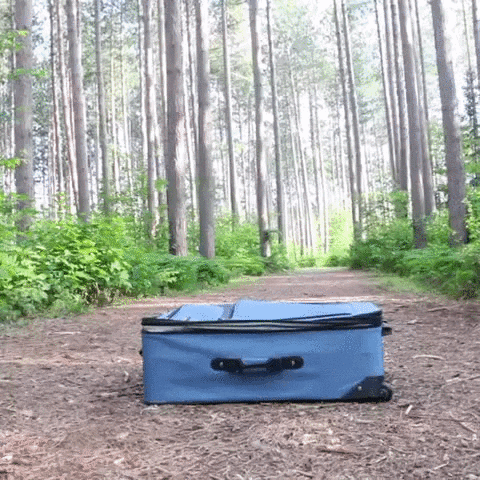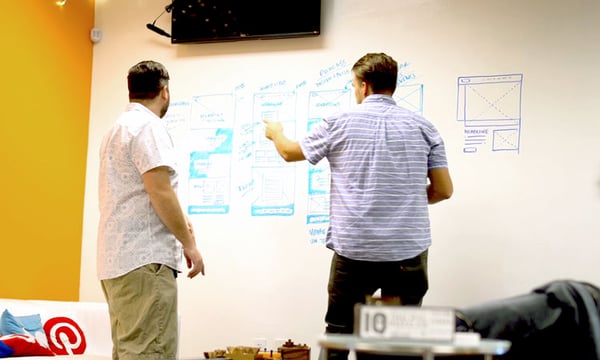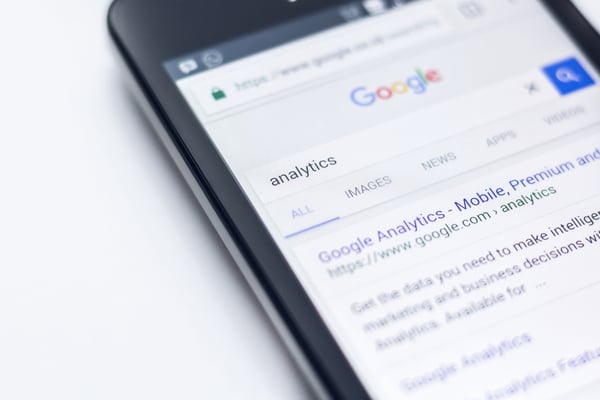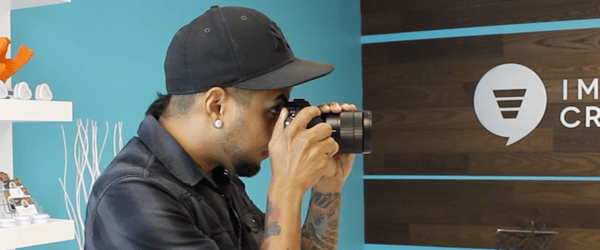If you’re considering a redesign of your company’s website, you may have any number of reasons. We’ve heard them all.
- It feels old
- The competition just launched a new look
- You’ve recently rebranded or refreshed your brand
- You’re a new marketing manager and want to make a splash
- You want your website to send your sales team leads
- It’s in your budget every couple of years
Before you spend the money on a website redesign, make sure it’s for the right reasons. Sure, outdated graphics are a valid reason, but some better reasons are:
- You’re evolving to better serve your buyers
- Your current site isn’t capable of achieving your marketing and sales goals
- Your technology is improving your user experience
The bottom line is that your website isn’t really about you. Your website exists for your consumers to use, not your team.
So a website redesign should be driven by their needs and preferences, not yours.
What you really need is a site built for your buyer personas with a strategy designed to serve them. This will help you work toward measurable business goals such as sales, leads and profit.
How do I Start a Website Redesign?
Have you ever taken a trip?

Whether it’s a long trip over several states or a simple drive to a town you’ve never been to, you most likely planned for the journey.
Of course, marking your route on a map has gone the way of the rotary phone. But we still plan our trip. At the very least, you plug the destination into your map and look at the route choices.
In the same way, starting a website redesign should include planning the “route.”
Website Audit
One way of planning and discovering what you need to reach your marketing and sales goals is with a website audit. These comprehensive assessments of your business can examine your marketing, technology, sales processes and more.
Typically, an audit begins with professional research by a third-party, and ends with a report of findings and suggestions.
A website audit can give you a starting point for planning, based on real data collected over the course of several weeks. If, after an audit, you choose to pursue a website redesign, you’ll understand your current site’s benchmarks and be better able to align your digital goals with a budget and timeline.
Here’s what an audit for your website might look like:
Week 1: The Kick Off // Initial meetings and interviews focused on your goals, challenges, competitors and ideal client personas.
Week 2: Traffic, Conversions and SEO // A detailed look at your website and marketing tools, an SEO audit, analytics analysis, website health report, and heat map research.
Week 3: Content // Assessment of your website content, its accuracy and length, page inventory, the buyer’s journey, brand persona, brand messaging, brand voice, grammar, and content depth.
Week 4: User Experience // Review the complete heat-mapped user experience of your website, from navigation to page loading speed, with recommendations and wireframes of improvements.
What are the Pieces of a Website Redesign?
Website redesigns, by nature, are never one simple fix. They’re strategic overhauls requiring a multi-discipline team of experts, all working together to create one cohesive digital space.
The pieces of that puzzle can vary widely.
Your website redesign will be a unique combination of graphic design, website development, content writing, search engine optimization, photography, videography, conversational marketing, and inbound marketing.
Design
.jpg?width=600&name=how-to-start-a-website-redesign-design-example%20(1).jpg)
Graphic design is typically the first thing (and sometimes the only thing) businesses weigh heavily when considering a website redesign. While it’s important to have a well-designed, modern website that accurately reflects your brand, don’t let design be the only factor.
A quality website starts with a designer turning sketches into templated pages, unique to your brand. The colors, layout and user experience will all be carefully considered for customer-centric reasons, to help you meet your business goals.
A good graphic design will help your brand to fit into your industry while standing out from your competition.
Designers today also should build responsive websites, meaning the site moves and adapts to shifting screen sizes, including mobile devices.
For the best user experience, a good site is also streamlined to help visitors find the information they need in as few clicks as possible. It serves the functional needs of your customers with a good graphic representation of your brand, from page layout to imagery.
Content

Written content is the heart of your site. It provides the answers your buyer personas came there to find and the reasons they should become customers. An accurate, error-free website helps to build trust with your consumer while a single grammar mistake, misspelling or inaccuracy can make buyers think twice about trusting you with their money.
Your content team should create every page intentionally and strategically, writing in a tone of voice that appeals to your buyer personas and reflects your brand.
Your website redesign should also include the creation or refresh of a brand guide or editorial style guide to direct the tone of voice and get everyone on the same page.
Using that guide, your team can carefully choose language that paints a conversation with your consumer and presents the exact information they want in as few words as possible.
Good content will get to the point, fast, while still being as comprehensive as you need to accomplish your business goals. For some, that’s a five-page website, for others, it’s 100+ pages.
Unlike graphic design, which requires specialized software, lots of businesses attempt writing their website content themselves. This is usually a terrible idea.
Here’s the thing: Just because nearly everyone knows how to write, doesn’t mean they should. There’s a discrepancy in writing skills the size of the Grand Canyon.
Even when you can write well, it’s almost always a better idea to pay an outsider to do it. Why? By not being as close to the subject, agency writers can see the subject from the same perspective as your customers and leads do. They know what questions to ask to cut the fat and fluff in your content. And they know how to get to the point, while holding a one-sided conversation with your site visitors.
An outside perspective also reveals questions and priorities that don’t always occur to your full-timers.Unless you’ve got experienced web writers on staff, hammering out your own copy for a professionally redesigned website is usually a terrible idea.
Take the opportunity to have a writer dig deep into what you do and package it perfectly for your visitors. You’ll be surprised by how much your copy can improve.
Development

Another critical (but not always obvious) part of the heavy lifting of a redesign is development. It’s the technical foundation of a website and the motor running the whole operation.
Even though you may never meet the developer of your redesigned site, there’s someone really smart behind the scenes that’s doing the technical work and coding it takes for your website to function. We like to say it’s the best marketing you’ve never noticed.
Every page that loads, every button that clicks and every video that plays was programmed to work that way. While the basic development of your website won’t require a lot of thought and decisions on your part, any extras will.
Apps, calculators, smart content, interactive maps, and other marketing solutions are all more work for your developers (not to mention hefty line items in a redesign budget). Fancy tools can send a project’s costs skyrocketing, but could be well worth the effort with the right strategy.
Work with a qualified agency you can trust to explain the development process, costs and details in non-technical terms you can understand. While development is a mandatory part of a custom website, it doesn’t have to be a budget-busting mystery.
Search Engine Optimization (SEO)

What good is an awesome website if no one ever sees it?
Search engine optimization (SEO), is the strategic art of helping search engines find, understand and share your website when it’s relevant to a search query. Since search engine rankings and rules change daily, you’ll always need to address SEO for your website. What better time to start than a website redesign?
Each page, line of content and image can be tweaked to help Google (and other search engines for those who use them), to share it with your potential consumers.
A website redesign should always include SEO and a good agency will explain exactly what that means. Don’t just go along with expensive line items you don’t understand. Your SEO strategy should be talked out in non-technical language you can follow, in order to create concrete and realistic goals.
The SEO for your redesigned website will fall into three categories:
On-page SEO
This is relevant keywords and phrases in your content, links to your own resources or other parts of your site and the right title tags, the HTML element that tells search engine what the title of each page is.
Off-page SEO
This type of SEO includes the links and citations on other sites, directing more visitors to your website. Good examples of this are local listings, so that you’ll appear in location-based searches.
Technical SEO
Here’s where the technical magic comes into play. This backend SEO takes place where you can’t see it. Part of this is making sure your site includes all the extra bits of code it needs to communicate clearly with search engines.
Another part of it is making sure it runs at peak performance; search engines hate slow-loading sites and poor performing servers. Don’t skimp on the SEO of your redesigned website.
While it may seem optional, it’s not in today’s modern digital marketplace. And it’s much more comprehensive than incorporating some keywords. In fact, when SEO is done the wrong way or against the rules (yeah, there are lots of rules), you can land yourself and your business in some serious hot water.
Photography

There’s nothing authentic about a stranger with dead eyes who’s laughing as she eats a salad. So keep her off your dang website.
Stock photography is dead.
Connect with your customers, show the real faces of your company as much as you can, build trust and showcase more products and services, all with real photography.
While this may seem like a detail, it’s a shame to put so much work and money into a custom website and dress it with the same boring, generic images as someone else. Even drone and aerial images are now super accessible and affordable to just about everyone.
Stock photography is simply bad for your brand. It’s a missed opportunity to captivate your potential consumers and show off your personality. Make sure custom photography is a part of your redesign conversations from the very start.
Heck, even customizing stock photography is much better than simply using the same photos everyone else does.
Videography
At this point, if custom marketing videos aren’t included all over your website redesign, it’s going to be out of date the moment it launches. Going forward, video is going to be one of the single most powerful marketing tools at your disposal. Search engines, agencies and businesses all over the world are catching on, fast. There’s a million ways to incorporate both professional and amataur video onto every page of your website. While you may need an agency to make sure your site is set up to stream videos, you don’t necessarily need one to create the videos themselves. With some creativity and simple tools, you can produce low to no-budget marketing videos to enhance your entire site. Just don’t mistake simple and cheap for low quality. Anything on your professional website should aspire to look professional and not fall too short. Learn the basics of video marketing and how to leverage it on your website.
Conversational Marketing

Another must-have of modern websites is conversational marketing. Chatbots are becoming so essential to the customer service experience that consumers are starting to expect them.
A conversational marketing integration can create an opportunity for visitors to convert into leads on every page, syncing your website with your marketing efforts.
By using automatic communication to communicate the right message to your visitors at the right time, your web redesign could pay for itself, fast. Explore the benefits chatbots could bring into your website redesign.
Now That I’ve Started, What’s Next?
If a website redesign journey is in your future, and you don’t want to go-it-alone, finding the right co-pilot is critical. You need a Wayfinder to help you navigate the trip.
At Impulse Creative, our data-driven approach to website redesign makes us a great Wayfinder for our clients. Our journey always begins with a deepdive into your current site.
If what you have isn’t working for you anymore, we want to know why. That information fuels the strategy we use to make your site a success.
Site after site, our team is able to take tired, old websites and transform them into lead-generating powerhouses. We do it by focusing on the strategy behind the design, not just reskinning the same information.
A website redesign is your golden opportunity to restrategize and recharge your online marketing efforts with powerful tools and more effective information. Don’t let it be anything less.
A website redesign can be so much more than a new look. It can reinvent the way you do business. Why settle for less?







